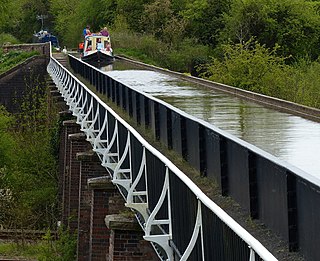
The Stratford-upon-Avon Canal is a canal in the south Midlands of England. The canal, which was built between 1793 and 1816, runs for 25.5 miles (41.0 km) in total, and consists of two sections. The dividing line is at Kingswood Junction, which gives access to the Grand Union Canal. Following acquisition by a railway company in 1856, it gradually declined, the southern section being un-navigable by 1945, and the northern section little better.
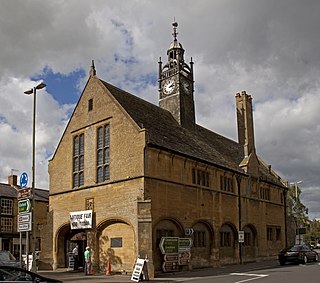
Moreton-in-Marsh is a market town in the Evenlode Valley, within the Cotswolds district and Area of Outstanding Natural Beauty in Gloucestershire, England.
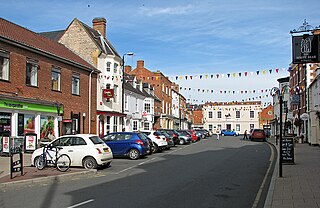
Shipston-on-Stour is a town and civil parish in the Stratford-on-Avon District in southern Warwickshire, England. It is located on the banks of the River Stour, 9 miles (15 km) south-southeast of Stratford-upon-Avon, 10 miles north-northwest of Chipping Norton, 14 miles (22 km) south of Warwick and 14.5 miles west of Banbury. In the 2021 census, Shipston-on-Stour had a population of 5,849.

Warwickshire is a ceremonial county in the West Midlands of England. It is bordered by Staffordshire and Leicestershire to the north, Northamptonshire to the east, Oxfordshire and Gloucestershire to the south, and Worcestershire and the West Midlands county to the west. The largest settlement is Nuneaton, and the county town is Warwick.

Stratford-on-Avon is a local government district in southern Warwickshire, England.

Winchcombe railway station is a heritage railway station which serves the town of Winchcombe in Gloucestershire, England. The stations itself is actually located in the nearby village of Greet. It is located on the Honeybourne Line which linked Cheltenham and Stratford-upon-Avon and which was opened by the Great Western Railway in 1906. The station closed to passengers in 1960, although the line itself remained open for freight and diversionary use until 1976, when a freight train derailed near Winchcombe and damaged the track.
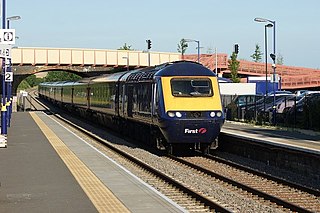
Honeybourne railway station serves the village of Honeybourne in Worcestershire, England. Opened in 1853, it is on the Cotswold Line and was formerly a busy junction with five platform faces, also serving trains on the Great Western Railway's Honeybourne Line between Cheltenham Spa and Stratford-upon-Avon, which formed part of a strategic route between the West Midlands and the West of England.
The Oxford, Worcester and Wolverhampton Railway (OW&WR) was a railway company in England. It built a line from Wolvercot Junction near Oxford to Worcester, Stourbridge, Dudley and Wolverhampton, as well as some branches.

The North Warwickshire Line is a suburban railway line in the West Midlands region of the United Kingdom. It runs from Birmingham to Stratford-upon-Avon, Warwickshire, now the southern terminus of the line, although until 1976 the line continued to Cheltenham as part of the Great Western Railway route from Birmingham to Bristol.
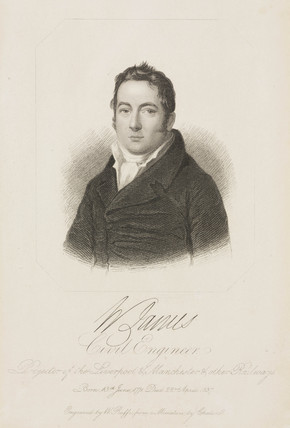
William James was an English lawyer, surveyor, land agent and pioneer promoter of rail transport. According to his obituary "He was the original projector of the Liverpool & Manchester and other railways, and may with truth be considered as the father of the railway system, as he surveyed numerous lines at his own expense at a time when such an innovation was generally ridiculed."
The Cotswold Hills League is a cricket league made up of clubs from Warwickshire, Worcestershire and Gloucestershire. The spine of the geographic area covered by the League is a picturesque part of England known as The Cotswolds.

Stretton-on-Fosse is a village in the Stratford District in Warwickshire, England. It is situated between the towns of Moreton-in-Marsh and Shipston-on-Stour. The village is situated along the ancient Fosse Way road which runs from Exeter in Devon to Lincoln in Lincolnshire. The road bypasses the village to the east and is now the modern-day A429 road. The village is close to the Gloucestershire and Warwickshire border. While the lower ground of the village is heavy clay the upper parts are composed of sand and shingle. During commercial extraction of sand important graves of the Roman-British and Anglo-Saxon periods were uncovered and interesting skeletons and personal belongings were unearthed. These burials were the result of internecine warfare between local tribal factions.
The Shipston-on-Stour branch was a 9-mile (14 km)-long single-track branch railway line that ran between a junction near Moreton-in-Marsh, on the present day Cotswold Line, to Shipston-on-Stour, via two intermediate stations, Longdon Road, and Stretton-on-Fosse.
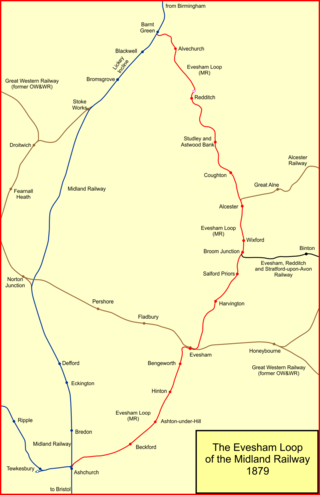
The Evesham branch line is a mostly disused English railway line running from Barnt Green via Redditch, Alcester and Evesham to Ashchurch. It was sometimes known as the Gloucester loop line of the Midland Railway.

The Tramway Bridge is a grade II listed pedestrian bridge crossing the River Avon at Stratford-upon-Avon, Warwickshire, England.
The Stratford on Avon Railway was a branch railway line opened in 1860, to connect the town of Stratford-upon-Avon to the Great Western Railway main line at Hatton, in England. It was worked by the GWR. In 1861 it was connected through Stratford to a branch line from Honeybourne, and this later enabled the development of a through mineral traffic. The company was absorbed by the GWR in 1883.

Shipston-on-Stour railway station was a railway station which served the town of Shipston-on-Stour, Warwickshire. It was the terminus of the Shipston-on-Stour branch.
Stretton-on-Fosse railway station was a railway station which served the village of Stretton-on-Fosse, Warwickshire, England. It was located north-east of the village near the Fosse Way road.

Longdon Road railway station served the hamlet of Darlingscott, Warwickshire. It was on the branch line from Moreton-in-Marsh to Shipston.

















